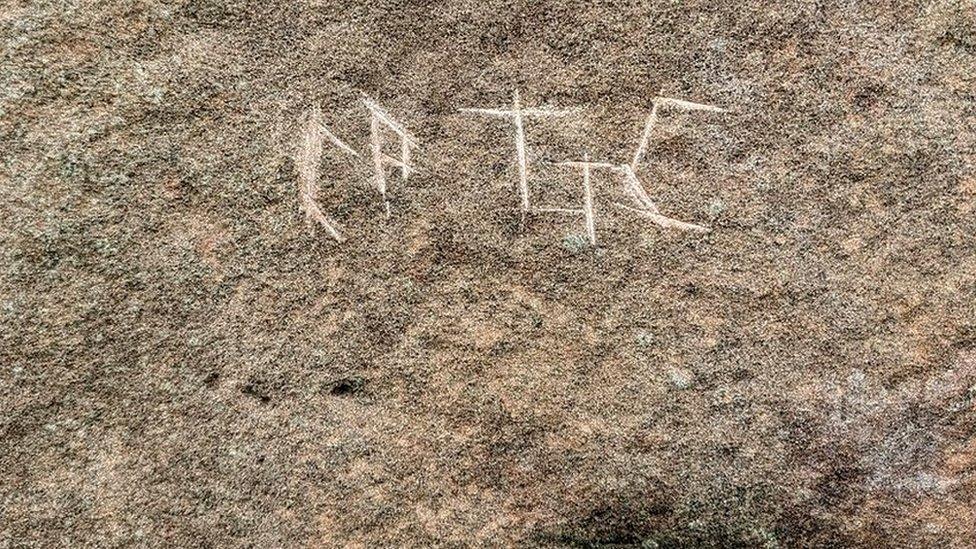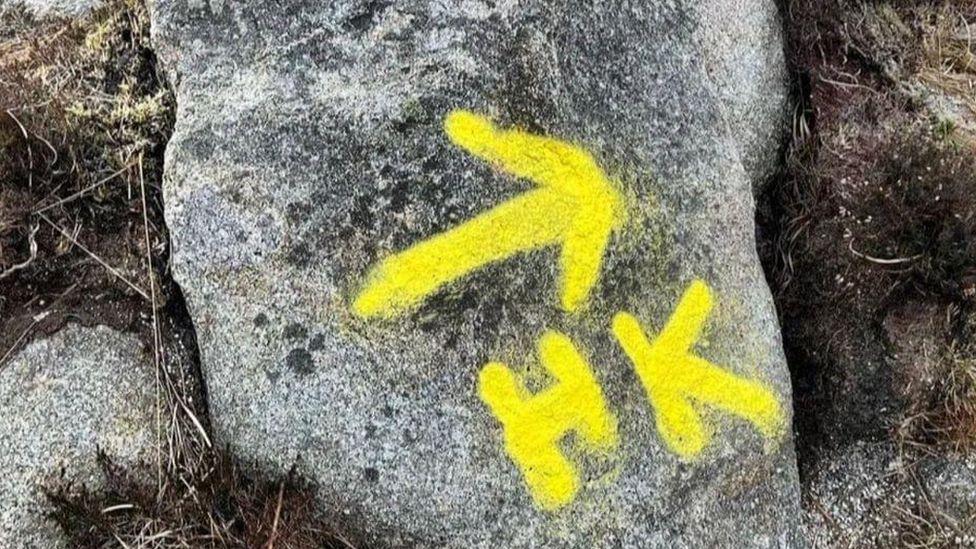Graffiti carved on ancient Machrie Moor standing stones
- Published

The Machrie Moor standing stones on Arran are legally protected
Graffiti carved on ancient standing stones on the island of Arran is a heritage crime, Historic Environment Scotland has said.
Staff from Scotland's heritage agency found the markings at Machrie Moor, near Blackwaterfoot.
The 4,500-year-old Neolithic stones are thought to have been used for religious and ceremonial activities.
Historic Environment Scotland (HES) said the site was a protected monument and any damage was a criminal offence.
The agency appealed for information on social media, external after discovering the graffiti during a recent visit.
HES wrote: "Machrie Moor standing stones are a particularly well-preserved landscape of Neolithic & Bronze Age monuments.
"We were concerned to discover that one stone has been damaged by incised graffiti.
"The stones are designated as a scheduled monument. This means they are legally protected and damage to them is a criminal offence."

The carved inscription was found on the ancient monument by Historic Environment Scotland
HES said damage had occurred previously at Machrie Moor and said they would be working with Police Scotland to investigate.
The remote moorland is managed by HES, but access is not monitored and is open to walkers.
The site includes stone circles, standing stones, chambered cairns and hut-circles.
HES added: "Heritage crime can cause damage that can never be repaired and forces us to spend less resources on important conservation work."
Sgt Kevin Blackley, of Police Scotland, said: "Enquiries are ongoing and we will continue to work closely with our partners at Historic Environment Scotland.
"It is particularly disappointing that someone, or some people, have taken advantage of the unrestricted access at the site and deliberately damaged these historic monuments."
Related topics
- Published5 May 2022

- Published29 April 2022
